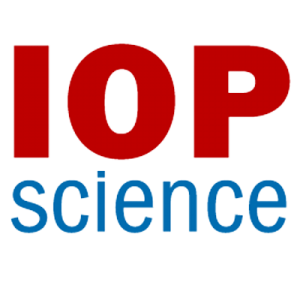 ABSTRACT:
ABSTRACT:
This research was conducted in August 2017 to analyze the sustainability status of anchovy resources in the Labuhanbatu territorial waters. This study used a method of secondary data analysis and surveys with samples. The data were analyzed following Multi Dimensional Scaling (MDS) method through the RAPFISH (Rapid Assessment Technique for Fisheries) approach. The results indicate that the resources management in Labuhanbatu waters is less sustainable with the index value of 42.76 (<50).
 ABSTRACT:
ABSTRACT:
The research was conducted on Pasumpahan Island in Bungus Teluk Kabung Sub-district, Padang, West Sumatera, Indonesia. The aim of this research was to: (1) Identify the visitor characteristics of Pasumpahan Island; (2) Measuring the amount of economic value obtained by Pasumpahan Island seen from the consumer surplus with the Individual Travel Cost Method. Respondents determined by accidental sampling method whit 40 respondents. The data were analyzed using multiple regression models. The research was conducted on Pasumpahan Island in Bungus Teluk Kabung Sub-district, Padang, West Sumatera. The demand based of Travel Cost Method was Y= 8,258-1,103(X1)+1,479(X3)- 0,598(X5)+0,241(X6) with r2 = 0,98; Y is the frekuensi of visits, X1 is travel cost, X2 education, X5 is miliage and X6 is gender. The accumulated of the consumer surplus can generate economic value of Pasumpahan Island. The value of consumer surplus Pasumpahan Island is equal to IDR.23.434.881,61 per year or IDR.3.691.532,58 per visit and economic value seen from the Travel Cost Mehod of IDR.103.946.582.269,63 per year.
 ABSTRACT:
ABSTRACT:
The purpose of this research was to determine capture fisheries status in a sustainability perspective based on ecology, economy, social, technology and ethic dimensions. A data analysis method which used was Multidimensional Scaling with RAPFISH technique. All dimensions in this study were based on FAO’s attribute and was modified based on fisheries condition in research location. Score multidimensional analysis is 45,69. These results indicate that the multidimensional sustainability status of capture fisheries on Bangka Island is in a less sustainable status. The result showed that ecology was the dimension which has the lowest score in order to support captured fisheries sustainability in Bangka Island. The result also formulated sensitive attribute in every condition and gave management recommendations for the sustainability of captured fisheries based on that attribute. This study showed the importance of dimension integration and stakeholder’s teamwork multisectoral in order to manage the sustainability of captured fisheries.
 ABSTRACT:
ABSTRACT:
Koto Panjang Hydroelectric Power Plant is one of the reservoirs in Riau Province, many activities in Koto Panjang. Plankton is one of the organisms that is influenced by this condition. This study aims to determine the plankton community structure in Koto Panjang. The study was conducted on May 2019. Survey methods were used in this research. Samples were taken 3 times, once / weeks, in 3 different areas. One hundred liters of water was sieved into 125 ml using a plankton net number 25. The plankton was sampled was fixed using a Lugol solution and identified using a binocular microscope. There were 11 classes of plankton in Koto Panjang, 8 classes of phytoplankton and 3 classes for zooplankton. The value of plankton species diversity index (H’) is ranges from 4.86 to 5.35, dominant index (C) 0.03-0.05 and equitability index E 0.54-0.62. The plankton community structure in the Koto Panjang Reservoir is categorized as good.
 ABSTRACT:
ABSTRACT:
The mangrove ecosystem is one of the ecosystems that has high productivity in coastal and marine areas, especially in supporting the productivity of fishery resources. This is due to the function of the mangrove ecosystem as ecological and socio-economic. Therefore, to determine the high level of mangrove utilization in the coastal area of Siak Regency, an economic assessment of mangrove ecosystem services is necessary. This research aimed to study quantified mangrove ecosystem services in Siak Regency, Indonesia. Methods for data collection included field survey and interview, performed between July – August 2020. The economic value assessment comprised valuation on following service groups, i.e. supporting, provisioning, regulating and cultural services. The results showed that the economic value obtained from all studied services reached IDR 29,180,852,208 per year, IDR 24,747,680,000 per year, IDR 90,291,590,933 per year and IDR 9,245,925,366 per year, respectively. In conclusion, a total amount of economic value for mangrove ecosystem services in Sungai Apit District, Siak Regency was IDR 153,466,048,507,014 per year, which was equivalent to IDR 300,090,044,0 per hectare per year.
 ABSTRACT:
ABSTRACT:
This research was carried out to determine the substitution values of fermented salted marine trash fish (FSMTF) for dietary conventional fishmeal (CFM) on growth of nemurus catfish. Four isoproteic (34% crude protein) and isocaloric (3.15 kcal DE g−1) diets were formulated. One diet was a control diet (C) in which 44% CFM was included and no FSMTF. Other three diets were test diets in which CFM was substituted with FSMTF, 50% (FSMTF-50), 75% (FSMTF-75) and 100% (FSMTF-100). A commercial diet (COM) which composed of 31 % crude protein and 2.90 kcal DE g−1 was also tested as a comparison. Nemurus catfish, 47±3.94 g in weight were distributed into triplicate net cages (2x2x1.5 m), 40 fishes per m3 water, and fed experimental diets two times daily for two months. Total substitution of fishmeal with FSMTF (FSMTF-100) in the fish diet did not affect fish growth (weight gain, specific growth rate, survival rate), feed efficiency ratio, protein efficiency ratio and protein utilization as compared to control diet. Total substitution of CFM with FSMTF gave better feed efficiency ratio, protein efficiency ratio and protein utilization than commercial diet. FSMTF therefore can completely replace CFM in the diet of nemurus catfish.

